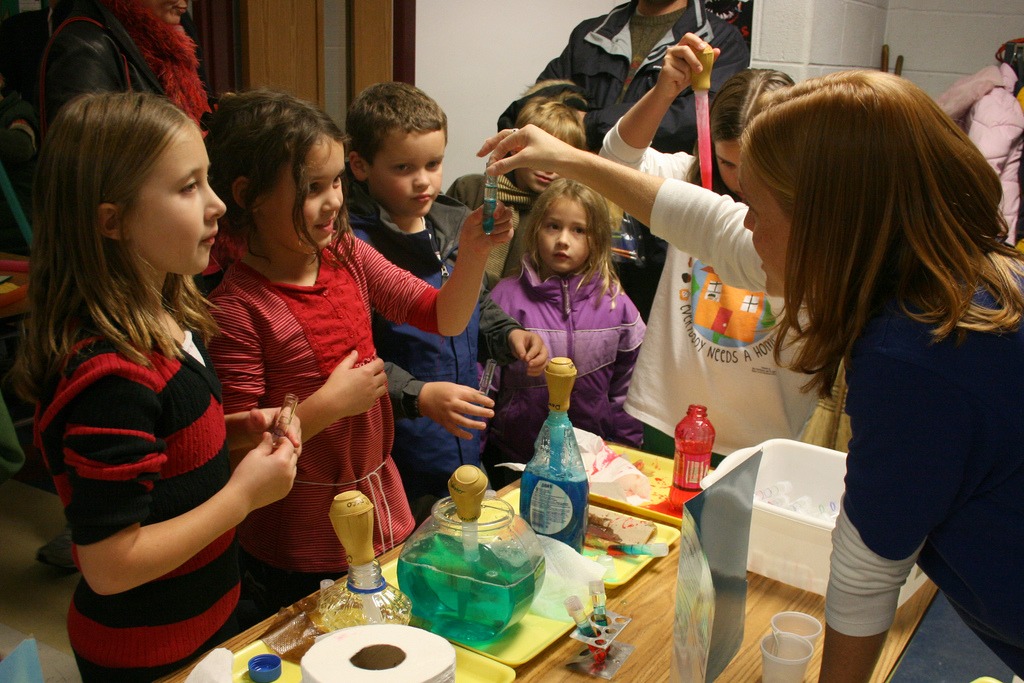
One of the ways that we at RevPart give back to our community is by donating time and money to get kids excited about science, technology, engineering, and math. This group of subjects, collectively known as STEM, is rapidly growing and expanding. In 2011, the US Department of Commerce said that STEM jobs had grown 7.9% over the previous ten years and are expected to grow another 17% by 2018. They also said that people with STEM degrees are less likely to face unemployment than those without (plus, their average pay is higher). [1]
But even as these job fields are moving in new directions, some people are concerned that America is not ready to compete with the rest of the world. Although kids often show interest in STEM (like my six year old nephew, who wants to be a paleontologist) this enthusiasm wanes as they grow older: in 2012, only 16% of students graduating had earned a degree in a STEM field. [2]
Many people attribute this to poor STEM education during the early grades. As Noha El-Ghobashy points out, “Children know all about the moon landing, but they’re using textbooks that predate our entire Mars program.” [3] If kids don’t even know about how far technology (and science and engineering and math) have advanced in just the last few years—far enough that we have a robot on Mars paving the way for eventual colonization and settlement—how will they be able to stay excited about this subject as they grow up?
And if their teachers aren’t excited and passionate about their subjects, why would the kids be interested, much less excited? As Holly Korbey says, “To get kids excited, you need to introduce them to somebody who is excited already and can convey that excitement.” (Tweet this!)
Science Pioneers points out that “STEM is their future—the technological age in which they live, their best career options, and their key to wise decisions,” but fewer than 40% of students who start out in college looking for a STEM degree will actually get it. [4]
Tony Murphy says that “children are natural scientists, engineers, and problem solvers. They consider the world around them and try to make sense of it the best way they know how: touching, tasting, building, dismantling, creating discovering, and exploring.” When a baby puts a lemon in her mouth, she’s doing an experiment and learning more about her world. (Whether or not this is a good experiment depends on the baby).

Why does this natural curiosity go away?
Kids, especially girls, face a lot of challenges on their ways to becoming scientists (or any aspect of STEM). Even bright minds don’t always make it, changing their course before they’ve achieved their dreams. The easiest way to stop this is to encourage kids in STEM early on, showing them that the technology industry is a good and fun place to be.
There are a few companies and projects that are working on this problem. Here’s a list of eight organizations that help to promote women in STEM, including a program to help teach computer code.
Lego is working on this too: they just released their first set of figures featuring female scientists. As little girls use Legos to act out science experiments, they can now use figures that look like them!
If you’re still on the fence, consider what Dr. Lucy Rogers has to say: “We need more engineers so things can be improved, fixed, and invented. Why wouldn’t you encourage a child to positively affect the world?” (Tweet this!)
Are there any kids who might be interested in STEM in your life? How are you encouraging the little innovators of tomorrow?
References
[1] US Department of Commerce “STEM: Good Jobs Now and for the Future.”
[2] National Center for Education Statistics.
[3] El-Ghobashy, Noha. “Why it’s Time to Change How and When WE Bring STEM into the Classroom.” 6 Aug 2014.
[4] Korbey, Holly. “All Hands on Deck: Getting Kids Excited about STEM.” 25 Sept 2013.


